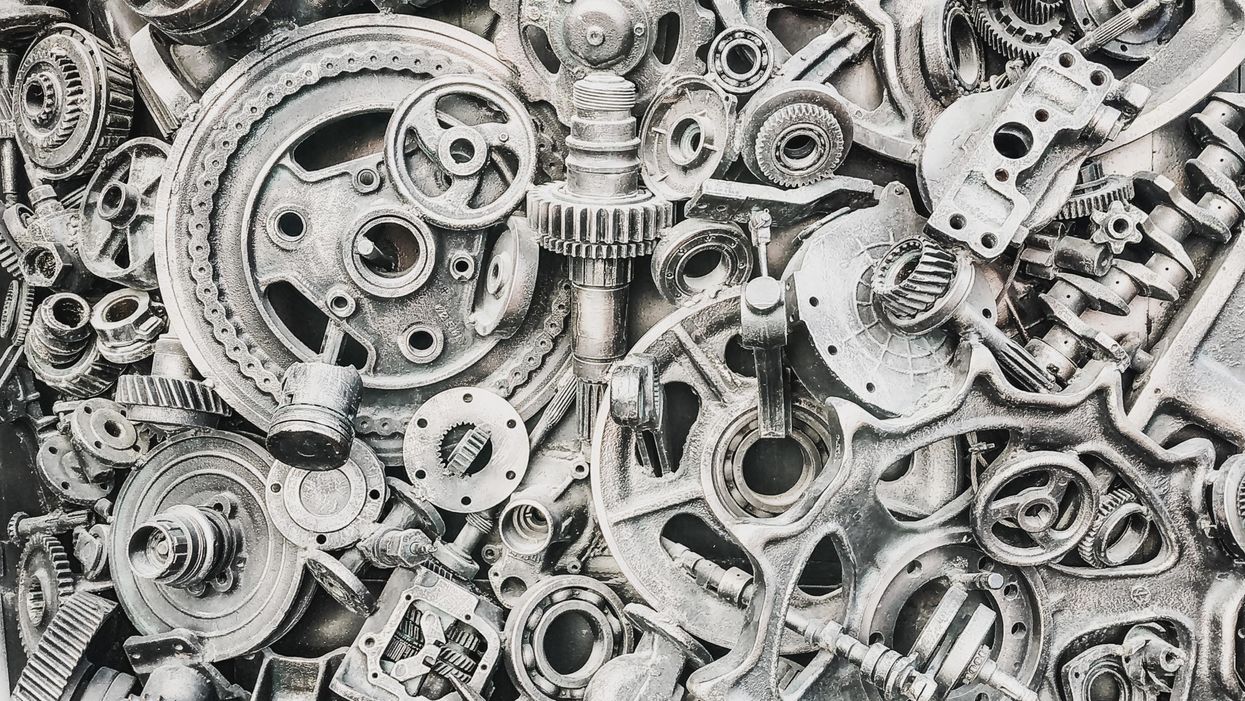Should Genetic Information About Mental Health Affect Civil Court Cases?
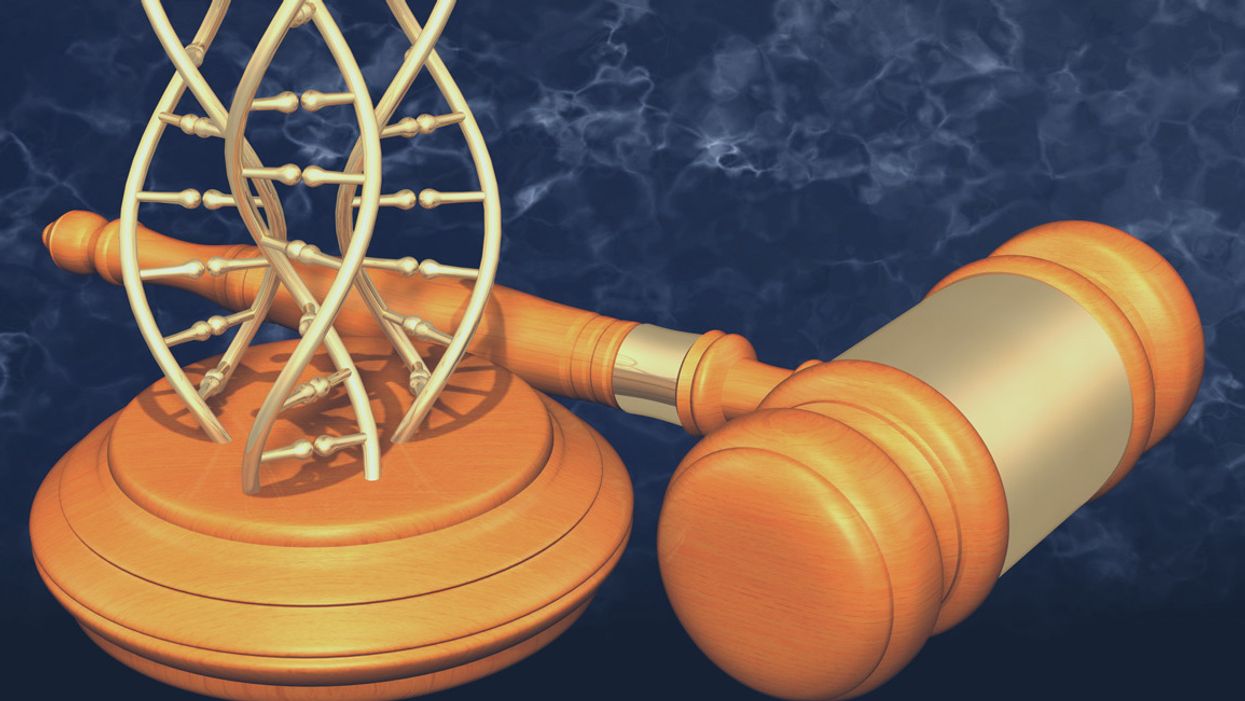
A rendering of DNA with a judge's gavel.
Imagine this scenario: A couple is involved in a heated custody dispute over their only child. As part of the effort to make the case of being a better guardian, one parent goes on a "genetic fishing expedition": this parent obtains a DNA sample from the other parent with the hope that such data will identify some genetic predisposition to a psychiatric condition (e.g., schizophrenia) and tilt the judge's custody decision in his or her favor.
As knowledge of psychiatric genetics is growing, it is likely to be introduced in civil cases, such as child custody disputes and education-related cases, raising a tangle of ethical and legal questions.
This is an example of how "behavioral genetic evidence" -- an umbrella term for information gathered from family history and genetic testing about pathological behaviors, including psychiatric conditions—may in the future be brought by litigants in court proceedings. Such evidence has been discussed primarily when criminal defendants sought to introduce it to make the claim that they are not responsible for their behavior or to justify their request for reduced sentencing and more lenient punishment.
However, civil cases are an emerging frontier for behavioral genetic evidence. It has already been introduced in tort litigation, such as personal injury claims, and as knowledge of psychiatric genetics is growing, it is further likely to be introduced in other civil cases, such as child custody disputes and education-related cases. But the introduction of such evidence raises a tangle of ethical and legal questions that civil courts will need to address. For example: how should such data be obtained? Who should get to present it and under what circumstances? And does the use of such evidence fit with the purposes of administering justice?
How Did We Get Here?
That behavioral genetic evidence is entering courts is unsurprising. Scientific evidence is a common feature of judicial proceedings, and genetic information may reveal relevant findings. For example, genetic evidence may elucidate whether a child's medical condition is due to genetic causes or medical malpractice, and it has been routinely used to identify alleged offenders or putative fathers. But behavioral genetic evidence is different from such other genetic data – it is shades of gray, instead of black and white.
Although efforts to understand the nature and origins of human behavior are ongoing, existing and likely future knowledge about behavioral genetics is limited. Behavioral disorders are highly complex and diverse. They commonly involve not one but multiple genes, each with a relatively small effect. They are impacted by many, yet unknown, interactions between genes, familial, and environmental factors such as poverty and childhood adversity.
And a specific gene variant may be associated with more than one behavioral disorder and be manifested with significantly different symptoms. Thus, biomarkers about "predispositions" for behavioral disorders cannot generally provide a diagnosis or an accurate estimate of whether, when, and at what severity a behavioral disorder will occur. And, unlike genetic testing that can confirm litigants' identity with 99.99% probability, behavioral genetic evidence is far more speculative.
Genetic theft raises questions about whose behavioral data are being obtained, by whom, and with what authority.
Whether judges, jurors, and other experts understand the nuances of behavioral genetics is unclear. Many people over-estimate the deterministic nature of genetics, and under-estimate the role of environments, especially with regards to mental health status. The U.S. individualistic culture of self-reliance and independence may further tilt the judicial scales because litigants in civil courts may be unjustly blamed for their "bad genes" while structural and societal determinants that lead to poor behavioral outcomes are ignored.
These concerns were recently captured in the Netflix series "13 Reasons Why," depicting a negligence lawsuit against a school brought by parents of a high-school student there (Hannah) who committed suicide. The legal tides shifted from the school's negligence in tolerating a culture of bullying to parental responsibility once cross-examination of Hannah's mother revealed a family history of anxiety, and the possibility that Hannah had a predisposition for mental illness, which (arguably) required therapy even in the absence of clear symptoms.
Where Is This Going?
The concerns are exacerbated given the ways in which behavioral genetic evidence may come to court in the future. One way is through "genetic theft," where genetic evidence is obtained from deserted property, such as soft-drink cans. This method is often used for identification purposes such as criminal and paternity proceedings, and it will likely expand to behavioral genetic data once available through "home kits" that are offered by direct-to-consumer companies.
Genetic theft raises questions about whose behavioral data are being obtained, by whom, and with what authority. In the scenario of child-custody dispute, for example, the sequencing of the other parent's DNA will necessarily intrude on the privacy of that parent, even as the scientific value of such information is limited. A parent on a "genetic fishing expedition" can also secretly sequence their child for psychiatric genetic predispositions, arguably, in order to take preventative measures to reduce the child's risk for developing a behavioral disorder. But should a parent be allowed to sequence the child without the other parent's consent, or regardless of whether the results will provide medical benefits to the child?
Similarly, although schools are required, and may be held accountable for failing to identify children with behavioral disabilities and to evaluate their educational needs, some parents may decline their child's evaluation by mental health professionals. Should schools secretly obtain a sample and sequence children for behavioral disorders, regardless of parental consent? My study of parents found that the overwhelming majority opposed imposed genetic testing by school authorities. But should parental preference or the child's best interests be the determinative factor? Alternatively, could schools use secretly obtained genetic data as a defense that they are fulfilling the child-find requirement under the law?
The stigma associated with behavioral disorders may intimidate some people enough that they back down from just claims.
In general, samples obtained through genetic theft may not meet the legal requirements for admissible evidence, and as these examples suggest, they also involve privacy infringement that may be unjustified in civil litigation. But their introduction in courts may influence judicial proceedings. It is hard to disregard such evidence even if decision-makers are told to ignore it.
The costs associated with genetic testing may further intensify power differences among litigants. Because not everyone can pay for DNA sequencing, there is a risk that those with more resources will be "better off" in court proceedings. Simultaneously, the stigma associated with behavioral disorders may intimidate some people enough that they back down from just claims. For example, a good parent may give up a custody claim to avoid disclosure of his or her genetic predispositions for psychiatric conditions. Regulating this area of law is necessary to prevent misuses of scientific technologies and to ensure that powerful actors do not have an unfair advantage over weaker litigants.
Behavioral genetic evidence may also enter the courts through subpoena of data obtained in clinical, research or other commercial genomic settings such as ancestry testing (similar to the genealogy database recently used to identify the Golden State Killer). Although court orders to testify or present evidence are common, their use for obtaining behavioral genetic evidence raises concerns.
One worry is that it may be over-intrusive. Because behavioral genetics are heritable, such data may reveal information not only about the individual litigant but also about other family members who may subsequently be stigmatized as well. And, even if we assume that many people may be willing for their data in genomic databases to be used to identify relatives who committed crimes (e.g., a rapist or a murderer), we can't assume the same for civil litigation, where the public interest in disclosure is far weaker.
Another worry is that it may deter people from participating in activities that society has an interest in advancing, including medical treatment involving genetic testing and genomic research. To address this concern, existing policy provides expanded privacy protections for NIH-funded genomic research by automatically issuing a Certificate of Confidentiality that prohibits disclosure of identifiable information in any Federal, State, or local civil, criminal, and other legal proceedings.
But this policy has limitations. It applies only to specific research settings and does not cover non-NIH funded research or clinical testing. The Certificate's protections can also be waived under certain circumstances. People who volunteer to participate in non-NIH-funded genomic research for the public good may thus find themselves worse-off if embroiled in legal proceedings.
Consider the following: if a parent in a child custody dispute had participated in a genetic study on schizophrenia years earlier, should the genetic results be subpoenaed by the court – and weaponized by the other parent? Public policy should aim to reduce the risks for such individuals. The end of obtaining behavioral genetic evidence cannot, and should not, always justify the means.
Scientists are making machines, wearable and implantable, to act as kidneys
Recent advancements in engineering mean that the first preclinical trials for an artificial kidney could happen soon.
Like all those whose kidneys have failed, Scott Burton’s life revolves around dialysis. For nearly two decades, Burton has been hooked up (or, since 2020, has hooked himself up at home) to a dialysis machine that performs the job his kidneys normally would. The process is arduous, time-consuming, and expensive. Except for a brief window before his body rejected a kidney transplant, Burton has depended on machines to take the place of his kidneys since he was 12-years-old. His whole life, the 39-year-old says, revolves around dialysis.
“Whenever I try to plan anything, I also have to plan my dialysis,” says Burton says, who works as a freelance videographer and editor. “It’s a full-time job in itself.”
Many of those on dialysis are in line for a kidney transplant that would allow them to trade thrice-weekly dialysis and strict dietary limits for a lifetime of immunosuppressants. Burton’s previous transplant means that his body will likely reject another donated kidney unless it matches perfectly—something he’s not counting on. It’s why he’s enthusiastic about the development of artificial kidneys, small wearable or implantable devices that would do the job of a healthy kidney while giving users like Burton more flexibility for traveling, working, and more.
Still, the devices aren’t ready for testing in humans—yet. But recent advancements in engineering mean that the first preclinical trials for an artificial kidney could happen soon, according to Jonathan Himmelfarb, a nephrologist at the University of Washington.
“It would liberate people with kidney failure,” Himmelfarb says.
An engineering marvel
Compared to the heart or the brain, the kidney doesn’t get as much respect from the medical profession, but its job is far more complex. “It does hundreds of different things,” says UCLA’s Ira Kurtz.
Kurtz would know. He’s worked as a nephrologist for 37 years, devoting his career to helping those with kidney disease. While his colleagues in cardiology and endocrinology have seen major advances in the development of artificial hearts and insulin pumps, little has changed for patients on hemodialysis. The machines remain bulky and require large volumes of a liquid called dialysate to remove toxins from a patient’s blood, along with gallons of purified water. A kidney transplant is the next best thing to someone’s own, functioning organ, but with over 600,000 Americans on dialysis and only about 100,000 kidney transplants each year, most of those in kidney failure are stuck on dialysis.
Part of the lack of progress in artificial kidney design is the sheer complexity of the kidney’s job. Each of the 45 different cell types in the kidney do something different.
Part of the lack of progress in artificial kidney design is the sheer complexity of the kidney’s job. To build an artificial heart, Kurtz says, you basically need to engineer a pump. An artificial pancreas needs to balance blood sugar levels with insulin secretion. While neither of these tasks is simple, they are fairly straightforward. The kidney, on the other hand, does more than get rid of waste products like urea and other toxins. Each of the 45 different cell types in the kidney do something different, helping to regulate electrolytes like sodium, potassium, and phosphorous; maintaining blood pressure and water balance; guiding the body’s hormonal and inflammatory responses; and aiding in the formation of red blood cells.
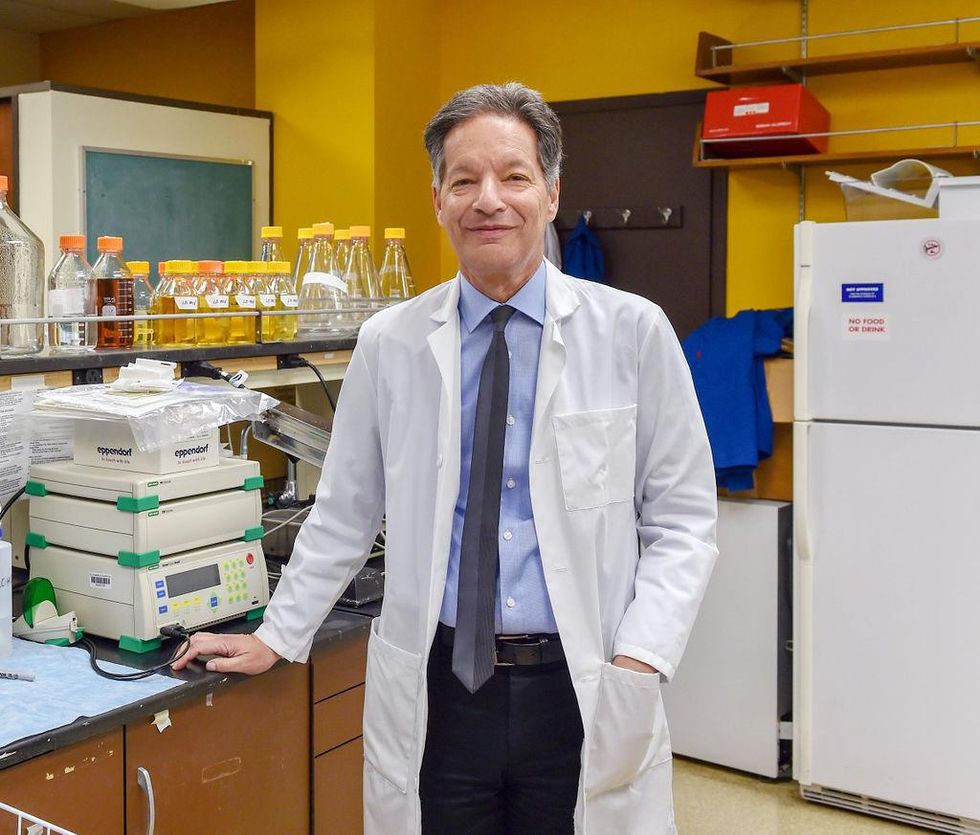
There's been little progress for patients during Ira Kurtz's 37 years as a nephrologist. Artificial kidneys would change that.
UCLA
Dialysis primarily filters waste, and does so well enough to keep someone alive, but it isn’t a true artificial kidney because it doesn’t perform the kidney’s other jobs, according to Kurtz, such as sensing levels of toxins, wastes, and electrolytes in the blood. Due to the size and water requirements of existing dialysis machines, the equipment isn’t portable. Physicians write a prescription for a certain duration of dialysis and assess how well it’s working with semi-regular blood tests. The process of dialysis itself, however, is conducted blind. Doctors can’t tell how much dialysis a patient needs based on kidney values at the time of treatment, says Meera Harhay, a nephrologist at Drexel University in Philadelphia.
But it’s the impact of dialysis on their day-to-day lives that creates the most problems for patients. Only one-quarter of those on dialysis are able to remain employed (compared to 85% of similar-aged adults), and many report a low quality of life. Having more flexibility in life would make a major different to her patients, Harhay says.
“Almost half their week is taken up by the burden of their treatment. It really eats away at their freedom and their ability to do things that add value to their life,” she says.
Art imitates life
The challenge for artificial kidney designers was how to compress the kidney’s natural functions into a portable, wearable, or implantable device that wouldn’t need constant access to gallons of purified and sterilized water. The other universal challenge they faced was ensuring that any part of the artificial kidney that would come in contact with blood was kept germ-free to prevent infection.
As part of the 2021 KidneyX Prize, a partnership between the U.S. Department of Health and Human Services and the American Society of Nephrology, inventors were challenged to create prototypes for artificial kidneys. Himmelfarb’s team at the University of Washington’s Center for Dialysis Innovation won the prize by focusing on miniaturizing existing technologies to create a portable dialysis machine. The backpack sized AKTIV device (Ambulatory Kidney to Increase Vitality) will recycle dialysate in a closed loop system that removes urea from blood and uses light-based chemical reactions to convert the urea to nitrogen and carbon dioxide, which allows the dialysate to be recirculated.
Himmelfarb says that the AKTIV can be used when at home, work, or traveling, which will give users more flexibility and freedom. “If you had a 30-pound device that you could put in the overhead bins when traveling, you could go visit your grandkids,” he says.
Kurtz’s team at UCLA partnered with the U.S. Kidney Research Corporation and Arkansas University to develop a dialysate-free desktop device (about the size of a small printer) as the first phase of a progression that will he hopes will lead to something small and implantable. Part of the reason for the artificial kidney’s size, Kurtz says, is the number of functions his team are cramming into it. Not only will it filter urea from blood, but it will also use electricity to help regulate electrolyte levels in a process called electrodeionization. Kurtz emphasizes that these additional functions are what makes his design a true artificial kidney instead of just a small dialysis machine.
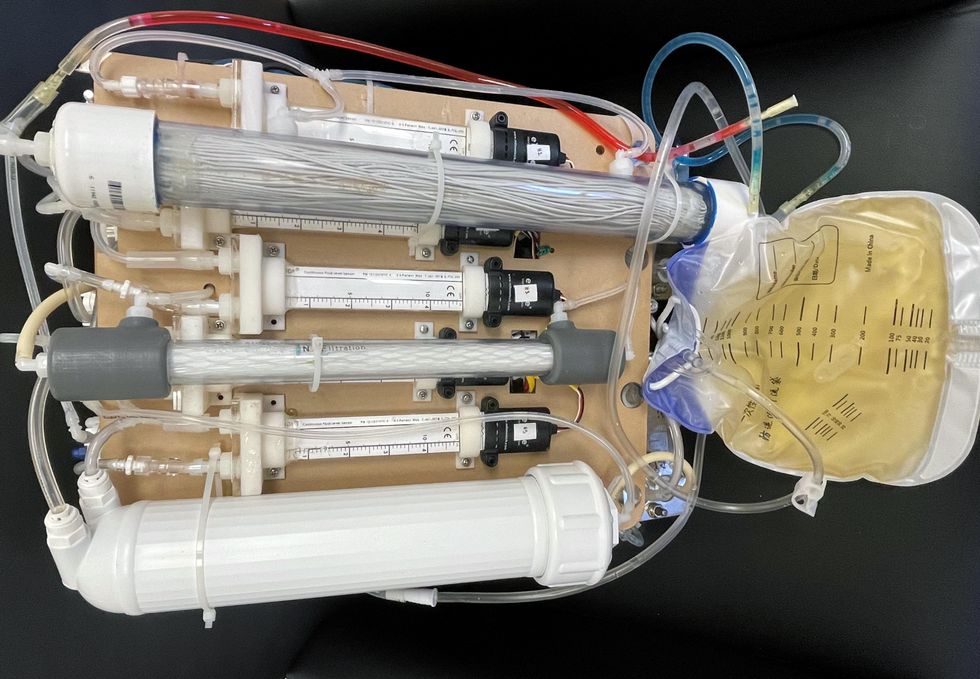
One version of an artificial kidney.
UCLA
“It doesn't have just a static function. It has a bank of sensors that measure chemicals in the blood and feeds that information back to the device,” Kurtz says.
Other startups are getting in on the game. Nephria Bio, a spinout from the South Korean-based EOFlow, is working to develop a wearable dialysis device, akin to an insulin pump, that uses miniature cartridges with nanomaterial filters to clean blood (Harhay is a scientific advisor to Nephria). Ian Welsford, Nephria’s co-founder and CTO, says that the device’s design means that it can also be used to treat acute kidney injuries in resource-limited settings. These potentials have garnered interest and investment in artificial kidneys from the U.S. Department of Defense.
For his part, Burton is most interested in an implantable device, as that would give him the most freedom. Even having a regular outpatient procedure to change batteries or filters would be a minor inconvenience to him.
“Being plugged into a machine, that’s not mimicking life,” he says.
This article was first published by Leaps.org on May 5, 2022.
With this new technology, hospitals and pharmacies could make vaccines and medicines onsite
New research focuses on methods that could change medicine-making worldwide. The scientists propose bursting cells open, removing their DNA and using the cellular gears inside to make therapies.
Most modern biopharmaceutical medicines are produced by workhorse cells—typically bacterial but sometimes mammalian. The cells receive the synthesizing instructions on a snippet of a genetic code, which they incorporate into their DNA. The cellular machinery—ribosomes, RNAs, polymerases, and other compounds—read and use these instructions to build the medicinal molecules, which are harvested and administered to patients.
Although a staple of modern pharma, this process is complex and expensive. One must first insert the DNA instructions into the cells, which they may or may not uptake. One then must grow the cells, keeping them alive and well, so that they produce the required therapeutics, which then must be isolated and purified. To make this at scale requires massive bioreactors and big factories from where the drugs are distributed—and may take a while to arrive where they’re needed. “The pandemic showed us that this method is slow and cumbersome,” says Govind Rao, professor of biochemical engineering who directs the Center for Advanced Sensor Technology at the University of Maryland, Baltimore County (UMBC). “We need better methods that can work faster and can work locally where an outbreak is happening.”
Rao and his team of collaborators, which spans multiple research institutions, believe they have a better approach that may change medicine-making worldwide. They suggest forgoing the concept of using living cells as medicine-producers. Instead, they propose breaking the cells and using the remaining cellular gears for assembling the therapeutic compounds. Instead of inserting the DNA into living cells, the team burst them open, and removed their DNA altogether. Yet, the residual molecular machinery of ribosomes, polymerases and other cogwheels still functioned the way it would in a cell. “Now if you drop your DNA drug-making instructions into that soup, this machinery starts making what you need,” Rao explains. “And because you're no longer worrying about living cells, it becomes much simpler and more efficient.” The collaborators detail their cell-free protein synthesis or CFPS method in their recent paper published in preprint BioAxiv.
While CFPS does not use living cells, it still needs the basic building blocks to assemble proteins from—such as amino acids, nucleotides and certain types of enzymes. These are regularly added into this “soup” to keep the molecular factory chugging. “We just mix everything in as a batch and we let it integrate,” says James Robert Swartz, professor of chemical engineering and bioengineering at Stanford University and co-author of the paper. “And we make sure that we provide enough oxygen.” Rao likens the process to making milk from milk powder.
For a variety of reasons—from the field’s general inertia to regulatory approval hurdles—the method hasn’t become mainstream. The pandemic rekindled interest in medicines that can be made quickly and easily, so it drew more attention to the technology.
The idea of a cell-free protein synthesis is older than one might think. Swartz first experimented with it around 1997, when he was a chemical engineer at Genentech. While working on engineering bacteria to make pharmaceuticals, he discovered that there was a limit to what E. coli cells, the workhorse darling of pharma, could do. For example, it couldn’t grow and properly fold some complex proteins. “We tried many genetic engineering approaches, many fermentation, development, and environmental control approaches,” Swartz recalls—to no avail.
“The organism had its own agenda,” he quips. “And because everything was happening within the organism, we just couldn't really change those conditions very easily. Some of them we couldn’t change at all—we didn’t have control.”
It was out of frustration with the defiant bacteria that a new idea took hold. Could the cells be opened instead, so that the protein-forming reactions could be influenced more easily? “Obviously, we’d lose the ability for them to reproduce,” Swartz says. But that also meant that they no longer needed to keep the cells alive and could focus on making the specific reactions happen. “We could take the catalysts, the enzymes, and the more complex catalysts and activate them, make them work together, much as they would in a living cell, but the way we wanted.”
In 1998, Swartz joined Stanford, and began perfecting the biochemistry of the cell-free method, identifying the reactions he wanted to foster and stopping those he didn’t want. He managed to make the idea work, but for a variety of reasons—from the field’s general inertia to regulatory approval hurdles—the method hasn’t become mainstream. The pandemic rekindled interest in medicines that can be made quickly and easily, so it drew more attention to the technology. For their BioArxiv paper, the team tested the method by growing a specific antiviral protein called griffithsin.
First identified by Barry O’Keefe at National Cancer Institute over a decade ago, griffithsin is an antiviral known to interfere with many viruses’ ability to enter cells—including HIV, SARS, SARS-CoV-2, MERS and others. Originally isolated from the red algae Griffithsia, it works differently from antibodies and antibody cocktails.
Most antiviral medicines tend to target the specific receptors that viruses use to gain entry to the cells they infect. For example, SARS-CoV-2 uses the infamous spike protein to latch onto the ACE2 receptor of mammalian cells. The antibodies or other antiviral molecules stick to the spike protein, shutting off its ability to cling onto the ACE2 receptors. Unfortunately, the spike proteins mutate very often, so the medicines lose their potency. On the contrary, griffithsin has the ability to cling to the different parts of viral shells called capsids—namely to the molecules of mannose, a type of sugar. That extra stuff, glued all around the capsid like dead weight, makes it impossible for the virus to squeeze into the cell.
“Every time we have a vaccine or an antibody against a specific SARS-CoV-2 strain, that strain then mutates and so you lose efficacy,” Rao explains. “But griffithsin molecules glom onto the viral capsid, so the capsid essentially becomes a sticky mess and can’t enter the cell.” Mannose molecules also don’t mutate as easily as viruses’ receptors, so griffithsin-based antivirals do not have to be constantly updated. And because mannose molecules are found on many viruses’ capsids, it makes griffithsin “a universal neutralizer,” Rao explains.
“When griffithsin was discovered, we recognized that it held a lot of promise as a potential antiviral agent,” O’Keefe says. In 2010, he published a paper about griffithsin efficacy in neutralizing viruses of the corona family—after the first SARS outbreak in the early 2000s, the scientific community was interested in such antivirals. Yet, griffithsin is still not available as an off-the-shelf product. So during the Covid pandemic, the team experimented with synthesizing griffithsin using the cell-free production method. They were able to generate potent griffithsin in less than 24 hours without having to grow living cells.
The antiviral protein isn't the only type of medicine that can be made cell-free. The proteins needed for vaccine production could also be made the same way. “Such portable, on-demand drug manufacturing platforms can produce antiviral proteins within hours, making them ideal for combating future pandemics,” Rao says. “We would be able to stop the pandemic before it spreads.”
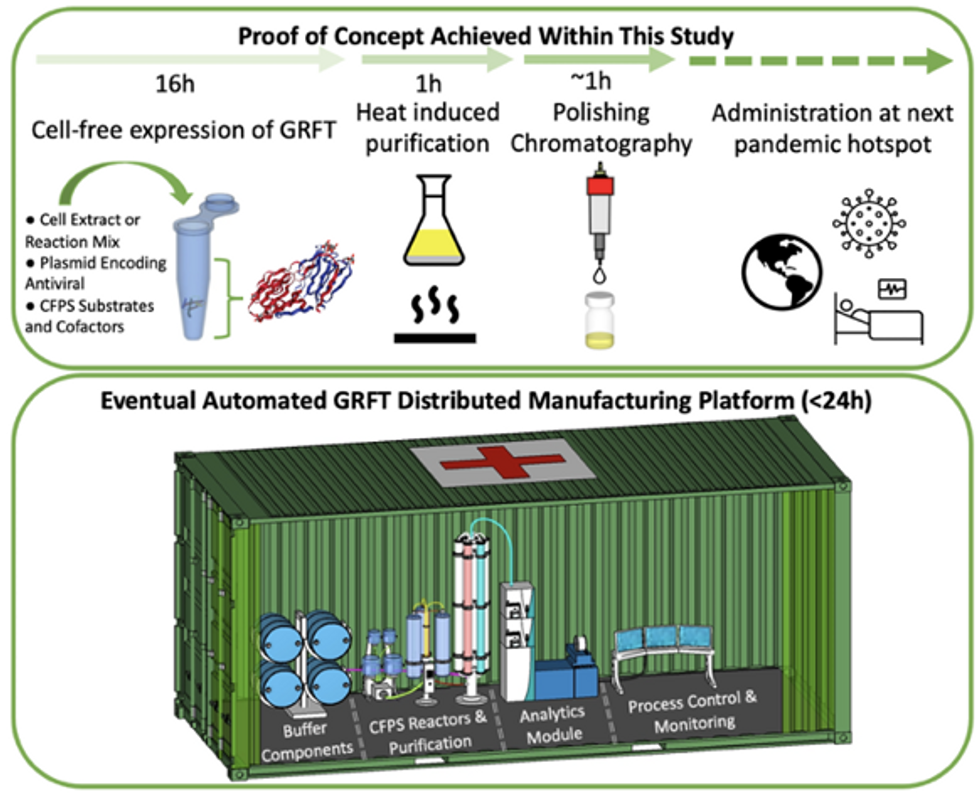
Top: Describes the process used in the study. Bottom: Describes how the new medicines and vaccines could be made at the site of a future viral outbreak.
Image courtesy of Rao and team, sourced from An approach to rapid distributed manufacturing of broad spectrumanti-viral griffithsin using cell-free systems to mitigate pandemics.
Rao’s idea is to perfect the technology to the point that any hospital or pharmacy can load up the media containing molecular factories, mix up the required amino acids, nucleotides and enzymes, and harvest the meds within hours. That will allow making medicines onsite and on demand. “That would be a self-contained production unit, so that you could just ship the production wherever the pandemic is breaking out,” says Swartz.
These units and the meds they produce, will, of course, have to undergo rigorous testing. “The biggest hurdles will be validating these against conventional technology,” Rao says. The biotech industry is risk-averse and prefers the familiar methods. But if this approach works, it may go beyond emergency situations and revolutionize the medicine-making paradigm even outside hospitals and pharmacies. Rao hopes that someday the method might become so mainstream that people may be able to buy and operate such reactors at home. “You can imagine a diabetic patient making insulin that way, or some other drugs,” Rao says. It would work not unlike making baby formula from the mere white powder. Just add water—and some oxygen, too.
Lina Zeldovich has written about science, medicine and technology for Popular Science, Smithsonian, National Geographic, Scientific American, Reader’s Digest, the New York Times and other major national and international publications. A Columbia J-School alumna, she has won several awards for her stories, including the ASJA Crisis Coverage Award for Covid reporting, and has been a contributing editor at Nautilus Magazine. In 2021, Zeldovich released her first book, The Other Dark Matter, published by the University of Chicago Press, about the science and business of turning waste into wealth and health. You can find her on http://linazeldovich.com/ and @linazeldovich.
